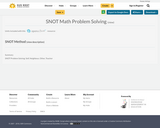
SNOT Problem Solving: Self, Neighbour, Other, Teacher
- Subject:
- Math
- Material Type:
- Activity/Lab
- Teaching/Learning Strategy
- Date Added:
- 10/22/2018

SNOT Problem Solving: Self, Neighbour, Other, Teacher
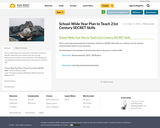
This is a year long school-wide plan to introduce and discuss SECRET skills with your students over the morning announcements and/or in your classroom.
The following are two examples of what has been done in the past in a school in MB.
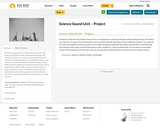
During this assignment the students have a choice of a final project to
demonstrate their understanding of sound. The student may choose to:
• create a musical instrument out of recycled materials which plays at least
3 different pitches
• use materials to create sound effects to enhance a poem or story
While doing this assignment the students enhance their critical thinking and
creativity skills as they use what they know to solve a problem to create
something new. The live theatre presentation section of this assignment and the
rubric were borrow from the Sun West Distance Learning course for Grade 4
Science.

"The BEST Self-Direction Toolkit is a collection of resources for teachers to use in the classroom for instruction and assessment that focuses on self-direction. The toolkit includes the self-direction rubric, self-direction activities and targeted resources for teachers. All tools are designed by teachers and tested in the classroom."
The kit includes activities, self reflections/assessments, rubrics and more!
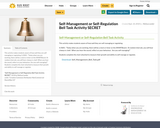
This activity makes students aware of how well they are self-managing or regulating.
It ASKS : "Today when you are working, there will be a clock or timer on the SMARTBoard. At random intervals, you will hear a beep or a bell. When you hear the sound, reflect on your behaviour. Are you self-managing?"
Students complete the chart attached to measure their growth and ability to self-manage or regulate.
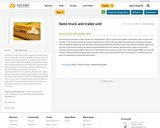
The semitruck and trailer is what I would call a simple project. This is a project that student
could make in their 1st year of IA in grade 7 or 8, (I have had grade 12 students make the truck
and A or B-train.) When the students are making their project they are demonstrating to me that they have understood and follow the safety for each of the machines available using. In Mr.
Kurulak’s class you must watch the safety presentation/demo for each machine, and then write a safety exam for that machine earning at least an 80% on the 1st try, if the student does not pass it on the 1st try they must get 100% correct on any rewrites, whatever Mark they get on their 1st exam is what I count towards their report card marks, as I’m assuming at that point I am expecting you know that information.

Includes rubrics for A10, B10, 20, A30 & B30 Senior ELA. There rubrics cover a wealth of outcomes and are included for the following areas: Compose & Create and Comprehend & Respond
This resource includes over 50 amazing rubrics! If you teach Sr. ELA or English, you definitely would use this resource.
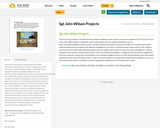
Summary
For my artifact, I incorporated the multiple intelligences and creativity in the
post-assignments for The Secret Lives of Sgt. John Wilson. Before reading the novel, I
had students take the multiple intelligences test
at http://www.bgfl.org/bgfl/custom/resources_ftp/client_ftp/ks3/ict/multiple_int/ind
ex.htm After this, students had a better understanding of their strengths in the
different intelligences. From here, I introduced some of the projects to the students
and I got input from them about possible projects that we could do which would fit
under the various intelligences. I made it mandatory that students choose three
projects, each from a different intelligence. I suggested that they choose assignments
from the categories in which they scored highly on the multiple intelligences test, but
I left the final decision up to them which assignments they would ultimately choose. I
made sure to give students the assignment details before reading the novel, so in that
way they were able to read with a purpose, keeping the requirements of the
assignment in mind.
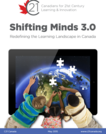
Getting Started - Thinking about the "Why" of PeBL.Shifting Minds 3.0 Redefining the Learning Landscape in Canada is a PDF produce by the board of C21 Canada. Author Penny, Milton.Milton, Penny. Shifting Minds 3.0: Redefining the Learning Landscape in Canada. C21 Canada, 2015.
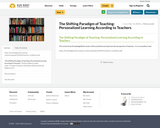
https://knowledgeworks.org/wp-content/uploads/2018/01/teacher-conditions.pdf
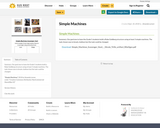
Summary: Our goal was to have the Grade 5 students build a Rube Goldberg
structure using at least 3 simple machines. The task chosen was to break a balloon
but the task could be changed.
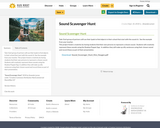
Task: Each group of partners will use their Ipads to find objects in their school that start with the sound ch. See the example from your teacher.
This project fosters creativity by having students find their own pictures to represent a chosen sound. Students will creatively represent these sounds using the Shadow Puppet App. In addition they will make up silly sentences using their chosen sound and record these as part of their presentation.
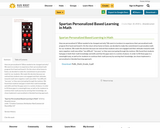
How we personalized it? What needed to be changed and why?
We went to Loreburn to experience their personalized math program first hand and loved it. On the return drive home to Eaton, we decided to make the commitment to personalize math for our students.
We made this decision because we noticed that students were not engaged and their attitudes towards math were negative; math was either “too difficult”, “too easy”, or they were just
going through the motions. We found that students had gaps in both their math knowledge
and skills and that the gaps were in a variety of places. In order to fill those gaps in a
meaningful way, as well as for students to continue their math journey by earning their
knowledge, we chose implement a personalized or blended learning approach.

See this Piktochart outlining the Eatonia School Spartans how they learn best. Included are information on:
- learning styles
- true colors
- left and right brain
- learning environment
- learning groups
- multiple intelligences
- how different grade levels learn
Great graphic to develop for portraying an overall picture of your school! Use it as an example template of how schools can organize the data from learner profiles for classes to make them useful throughout the year, post around your school, etc.

Download the full guide free on this site.
Summary:
Step 1: Articulate Your Why
Step 2: Identify Your Stakeholders
Step 3: Plot Your Stakeholders on an Engagement Matrix
Step 4: Explore Tactics Aligned with Your Needs
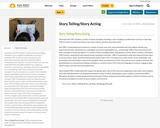
Outcomes Art CPK.2 Explore a variety of drama strategies including: • role • imaging • parallel play • journeys • meetings. CPK.4 Create art works that express own observations and ideas about the world.
ELA CRK.1 Comprehend and respond to a variety of visual, oral, print, and multimedia texts that address identity (e.g., exploring interests), community (e.g., belonging), and social responsibility (e.g., contributing). CRK.2 View and interpret the basic message of visuals and objects in a variety of texts including models, photographs, dramas, dance creations, and videos. CRK.3 Listen, comprehend, and respond to gain meaning in oral texts. CRK.4 Comprehend, retell, and respond to basic ideas in stories, poems, songs, and informational texts read to them. CCK.1 Compose and create various visual, multimedia, oral, and written texts that explore and present thoughts, ideas, and experiences CCK.2 Use and construct symbols, pictures, and dramatizations to communicate feelings and ideas in a variety of ways. CCK.3 Use oral language to converse, engage in play, express ideas, and share personal experiences.
Social Studies PAK.1 Understand and respect the agreed-upon rules of the classroom, playground, and school, and recognize that rules and expectations are designed to promote a state of safety, selfregulation, peace, balance, and harmony PAK.2 Recognize situations in which disagreement may be part of living, studying, and working together, and that resolution may be an avenue to progress to a state of peace, balance, and harmony.
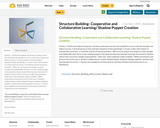
Activity- 1. Divide the students into groups. Introduce action plan and materials available for use to create the strongest and tallest structure. 2. Each group has to draw and label a blueprint of their plan/design. 3. Create a rubric with students to evaluate their structures. 4. Fascilitate and ask each group questions – What are you using in your design to create strength and stability.(We used this to create a shadow puppet on the ipads that demonstrated their learning.) Assessment 5. Students will test their structures strength using textbooks. Video tape. (Have textbooks readily available) **While presenting to each group in front of the class. 6. Students collaboratively created a Shadow Puppet, designed a dialogue together, and share their learning about structures. 7. Parents were engaged as we showcased our learning at Student Led Conferences on our Smartboard.
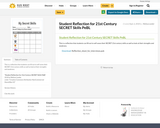
This is a reflection that students can fill out to self-asses their SECRET 21st century skills as well as look at their strengths and weakness.

Student Toolkits University Prep (7 Cs)
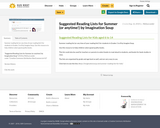
Summer reading list (or any time of year reading list!) for students in Grades 1 to 8 by Imagine Soup.
Use this resource to help children select good quality books.